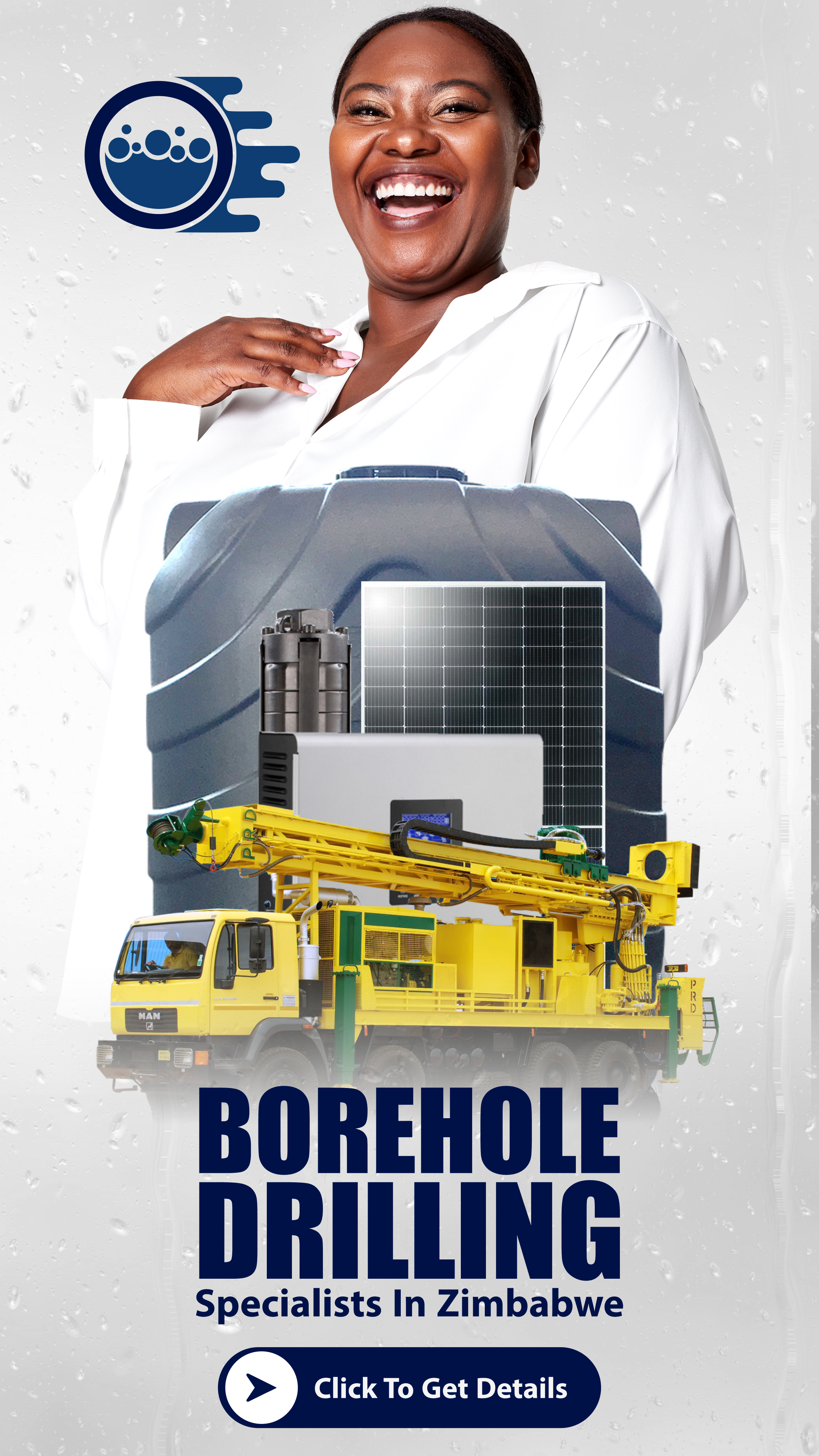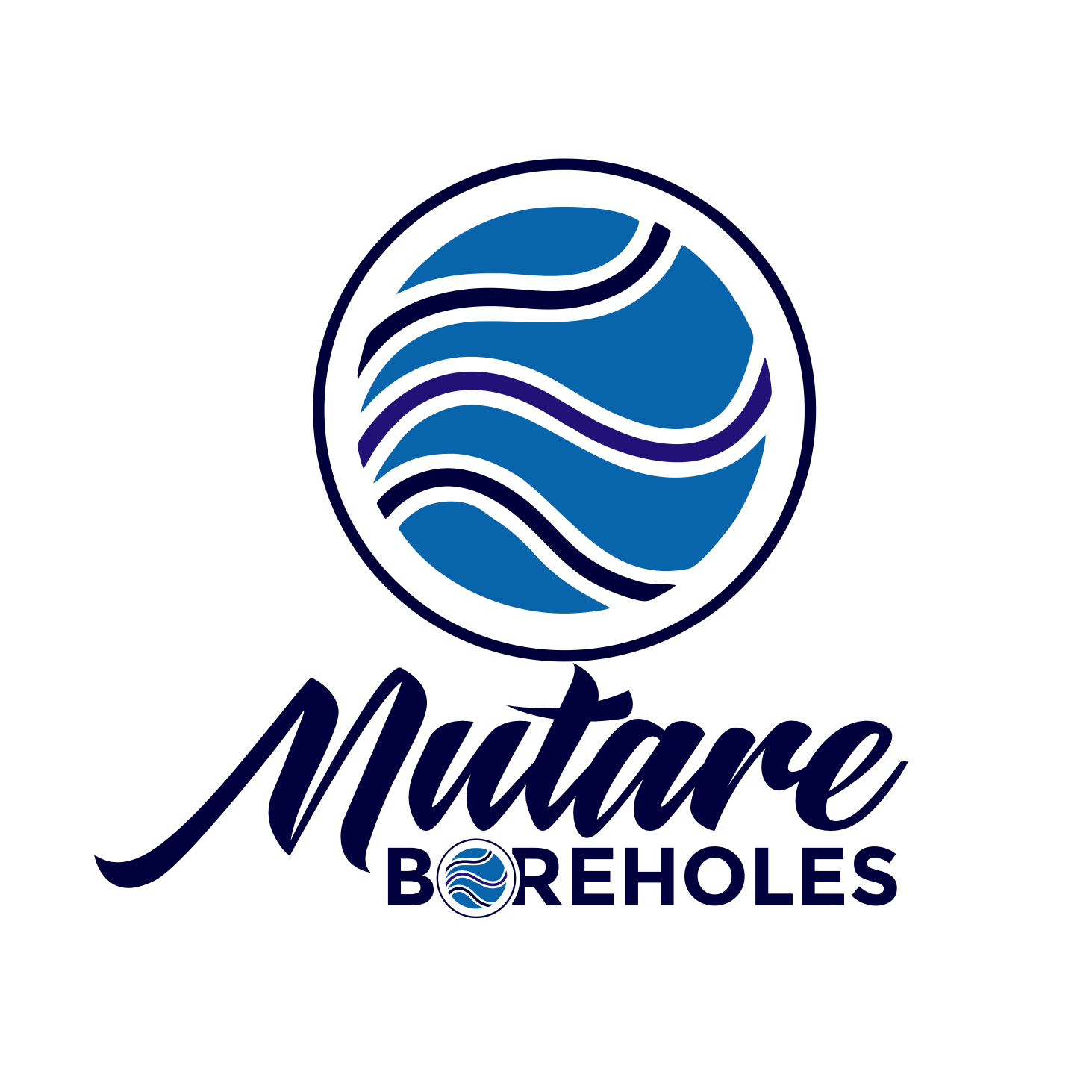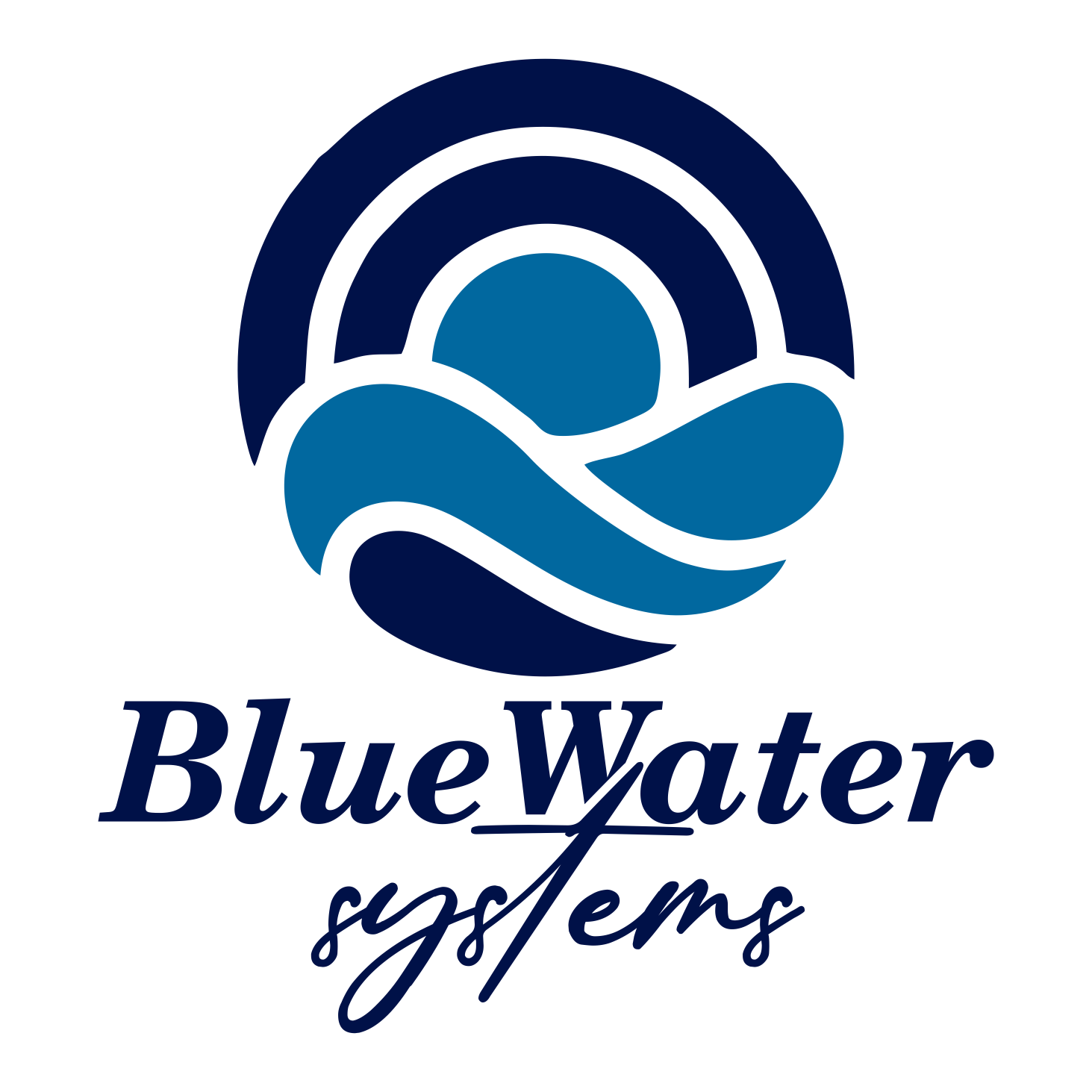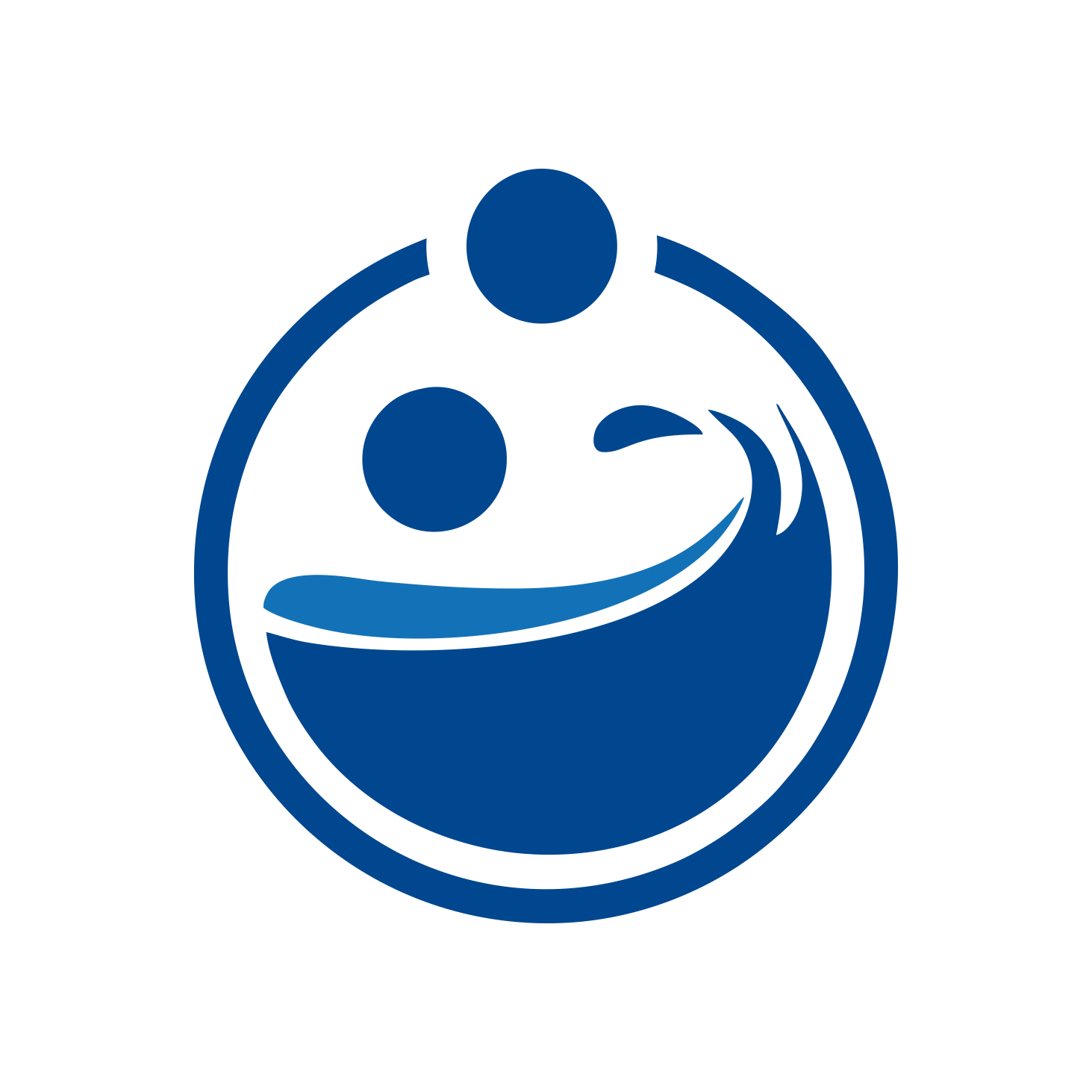Analysis by Chris Harrington
The wrestling world was enormously shocked this week with news of the sudden death of Jim “Ultimate Warrior” Hellwig. It’s amazing to consider that his career in the WWF could have taken such a different path had he gone to Japan as a headliner. Eerily, his speech at the 2014 Hall of Fame and subsequent Monday Night Raw contain numerous dark premonitions about his life.
His impressive win record over top opponents is unlikely to be matched again. Most surprisingly, his lawsuits have uncovered a secret 1997 WWF deal that almost brought Warrior into the Attitude-era mix.
Here are the four incredible secrets and facts about The Ultimate Warrior’s career.
4. Ultimate Warrior’s Nearly Had A Completely Different Career In Japan.
The Ultimate Warrior only had two matches in Japan. However, he nearly had an entire career. In 1987, New Japan Pro Wrestling wanted to create a fresh foreign star. They had the name (Big Van Vader) but they needed a body to play it. Then even lined up a famous manager – Takeshi Kitano (a.k.a. Beat Takeshi – famous for the host of Takeshi’s Castle, which decade’s later was later re-edited into mXc – Most Extreme Elimination Challenge on Spike).
The Vader character was destined to be a huge star with custom mask, massive special effects and a plan to rocket him to the top by beating NJPW’s top star, Antonio Inoki, in a quick match. They needed a body and Jim “Dingo Warrior” Hellwig seemed perfect for the job.
But it didn’t go that way. Instead, Hellwig joined the World Wrestling Federation. Hellwig started wrestling for Vince McMahon in July 1987 and it quickly became clear he was going to be a hit with WWF audiences. The Dingo Warrior became the Ultimate Warrior. Hellwig signed his first WWF contract on September 23, 1987 and spent the next four years relentlessly touring for the WWF.
In 1987, New Japan Pro Wrestling, the second largest promotion on Earth, was forced to go on to their second choice for the Big Van Vader character – AWA’s Leon White. In the end, this outcome was probably best for both parties. Warrior ended up a big star in America and White (as Vader) ended up a big star in Japan. (Ironically, when Warrior had his final run in WWF, his last match in the WWF was a count-out victory over Vader on June 25, 1996.)
Eventually, the Ultimate Warrior did wrestle in Japan – but only twice. The first time, Warrior appeared on April 13, 1990 as part of an All-Star Wrestling Summit featuring matches from WWF, New Japan Pro Wrestling and All Japan Pro Wrestling. The once-in-a-lifetime show drew almost 44,000 to the Tokyo Dome. It was less than two weeks after Warrior had defeated Hulk Hogan at Wrestlemania VI and Ultimate Warrior was the newly crowned WWF World champion. This title change led to a lot of tension as All Japan co-founder Giant Baba was quite upset that Vince McMahon hadn’t informed him in advance that Hulk Hogan wouldn’t be WWF Champion anymore. The arranged “title defense” against Terry Gordy fell apart and in the end Hulk Hogan defeated Stan Hansen in the main event while WWF Champion The Ultimate Warrior beat Ted DiBiase using a flying clothesline and splash in a quick six minute match. Japanese fans were not kind and treated Warrior’s match like a comedy spectacle instead of a serious world championship bout.
In 1991, the WWF/WCW rivalry was played out overseas as both companies supplied talent for rival Tokyo Dome shows held just 9 days apart. WWF had established a working relationship with Tenryu’s Super World of Sports (SWS) and promoted Hulk Hogan & Genichiro Tenryu vs. The Road Warriors (Legion of Doom). New Japan and WCW booked a “Starrcade in Tokyo Dome” show headlined by Ric Flair vs Tatsumi Fujinami. The NJPW/WCW show drew a record gate with an announced 64,500 fans (the building legitimately had at least fifty-four thousand fans there). The WWF/SWS only drew about 35,000 fans (which was comically exaggerated to 64,618 for publicity). Held just one week after Wrestlemania VII, Ultimate Warrior pinned the newly uncrowned Sgt. Slaughter in another six-minute special with his trademark clothesline and splash.
Still, despite his limited working ability and extreme lack of presence in Japan, Ultimate Warrior was still quite popular in Japan. Gong Magazine Weekly, a popular Japanese pro-wrestling publication rated Ultimate Warrior as #8 among the top twenty Gaijin (foreign) wrestlers based on fan popularity balloting. It’s a surprising feat considering how limited his exposure was in Japan compared with the stronger presences in major Japanese Companies of the other wrestlers. (Warrior was ranked behind Stan Hansen, Dynamite Kid, Scott Norton, Sting, Vader and Terry Gordy. Warrior was ranked more popular than Steiner Brothers, Steve Williams, Johnny Ace – later John Laurinaitis, Mil Mascaras, Terry Funk, the Road Warriors, Danny Spivey, Ken Shamrock – then Wayne Shamrock, The Sheik, King Haku, Doug Furnas and Davey Boy Smith.)
3. Ultimate Warrior Ominously Suggested An Early Death
“Every man’s heart one day beats its final beat. His lungs breathe its final breath. And if what that man did in his life makes the blood pulse through the bodies of others; If it makes them believe deeper in something larger than life; than his essence, his spirit, will be immortalized by the storytellers, by the loyalty, by the memory of those who honor him and make the running the man did live forever.” —Ultimate Warrior on Monday Night Raw, April 7, 2014
With the myriad of lawsuits, there were numerous depositions of Ultimate Warrior and Vince McMahon over the years. After the Ultimate Warrior’s father died in July 1996, Warrior missed several house shows and was removed from appearing at the In Your House 9 PPV in Vancouver (International Incident). Warrior insisted his absence was due to grieving for his father. Vince McMahon didn’t believe that was Warrior’s real excuse since the Hellwig and his father had allegedly been estranged for more than a decade.
On Feburary 19, 1996, Warrior had signed a 18-month contract guaranteeing him at least a million dollars in composition. When WWF suspended/fired him later that year, Warrior filed suit in August 1996. In one deposition, Jim Hellwig (who had already legally changed his name to Warrior) talked about his family. He noted that his father died at 57 and his “grandfathers die at 52″. At only 37 years old, Warrior said, “I got 20 years left in my life maybe”.
As the years went on, Warrior saw wrestler after wrestler from his era pass away prematurely. Those included top opponents, his partners and others from the locker room: Andre the Giant (1993), Dino Bravo (1993), Rick Rude (1999), Mr Perfect (2003), Road Warrior Hawk (2003), Big Boss Man (2004), Earthquake (2006), Bad News Allen (2007), Sherri Martel (2007), Crush (2007) and Randy Savage (2011). He was a pallbearer at Kerry Von Erich’s 1993 funeral. One of his closest friends in WWF, especially before the Texas Tornado became his travelling partner, was Owen Hart, who senselessly died in an accident in 1999.
While only a portion of these deaths were drug-related, no doubt they contributed to overwhelming feeling of eminent morality.
2. Warrior Was Uniquely Protected Throughout His WWF Career
Warrior wrestled well over a thousand WWF matches. From the start, Vince McMahon saw the potential for a big star, and protected him. In 1990, when WWF went to Japan for joint Tokyo Dome with AJPW/NJPW, Vince McMahon’s only major demands were that Hulk Hogan and Ultimate Warrior would be protected.
Unsurprisingly, Warrior rarely worked extremely long matches. While accurate statistics don’t exist (yet), I’d wager that his ring entrances and promos often exceeded his match’s actual length. On average an Ultimate Warrior matches was 5 minutes 15 seconds but that represents a broad spectrum:
During his WWF career, he won an astounding 90% of his matches.
In 1987, his WWF record was 76-1-1 and 10 other matches (99% win)
In 1988, his WWF record was 157-10-10 and 39 other matches (94% win)
In 1989, his WWF record was 155-23-3 and 39 other matches (87% win)
In 1990, his WWF record was 180-16-0 and 30 other matches (92% win)
In 1991, his WWF record was 89-34-0 and 19 other matches (72% win)
In 1992, his WWF record was 106-1-1 and 15 other matches (99% win)
In 1996, his WWF record was 27-0-2 and 1 other match. (100% win)
In 1998, his WCW record was 2-1 (67% win).
His losses were rare. Clean losses were even rarer.
12/28/87, Rick Rude pinned the Ultimate Warrior.
On a April 25, 1988 edition of Prime Time Wrestling, he lost in a tag match via DQ when One Man Gang & Ron Bass defeated Don Muraco & Ultimate Warrior after Junkyard Dog interfered and attacked Outlaw Ron Bass. That April, in Italy, Andre the Giant pinned the Ultimate Warrior after kicking him in the face. In June, in Quebec, Dino Bravo pinned the Ultimate Warrior by grabbing the ring ropes for extra leverage. Throughout September 1988, Honkytonk Man was able to beat the newly crowned IC Champion via count-out, usually through the antics of Jimmy Hart (including climbing on Warrior’s back).
From 1989 through 1991, his only losses came to Randy Savage and Rick Rude. He lost his WWF Title to Sgt. Slaughter in 1991 and in August 1992 the Nasty Boys defeated Randy Savage and the Ultimate Warrior. He did not lose during his 1996 comeback (final match was beating Vader by count-out) and in 1998 Hogan got his win back when he defeated Warrior at Halloween Havoc. He wrestled in 45 of the 50 states (Warrior wrestled in 45 States (missing Arkansas, Delaware, Montana, Vermont , Wyoming) and several countries (Canada, US, Japan, Italy, England and Switzerland).
His most frequent opponents were:
Rick Rude (116 matches)
Undertaker (84 matches)
Randy Savage (82 matches)
Andre the Giant (82 matches)
Honkytonk Man (77 matches)
Papa Shango (72 matches)
Dino Bravo (50 matches)
Hercules (43 matches)
Demolition Smash (Barry Darsow) (42 matches)
Mr Perfect (41 matches)
Sgt Slaughter (40 matches)
Demolition Ax (Bill Eadie) (38 matches)
Crush (34 matches)
Kamala (27 matches)
Brooklyn Brawler (Steve Lombardi) (26 matches) – his first WWF opponent
Ted Dibiase (24 matches)
(King) Harley Race (19 matches)
Barry Horowitz (18 matches)
(King) Haku (18 matches)
Vader (17 matches) – his last WWF opponent
One Man Gang (17 matches)
Bobby Heenan (15 matches)
Terry Gibbs (15 matches)
Iron Mike Sharpe (14 matches)
Ric Flair (9 matches)
Ultimate Warrior Was A Constant Presence In WWF For More Than Four Years. He wrestled 50 months straight (July 1987 through August 1991):

And his departures were not due to injuries but rather conflicts with McMahon– drug suspensions, missing house shows and pay disagreements.
2. Warrior Was Uniquely Protected Throughout His WWF Career

Warrior wrestled well over a thousand WWF matches. From the start, Vince McMahon saw the potential for a big star, and protected him. In 1990, when WWF went to Japan for joint Tokyo Dome with AJPW/NJPW, Vince McMahon’s only major demands were that Hulk Hogan and Ultimate Warrior would be protected.
Unsurprisingly, Warrior rarely worked extremely long matches. While accurate statistics don’t exist (yet), I’d wager that his ring entrances and promos often exceeded his match’s actual length. On average an Ultimate Warrior matches was 5 minutes 15 seconds but that represents a broad spectrum:

Analysis by Chris Harrington
During his WWF career, he won an astounding 90% of his matches.
In 1987, his WWF record was 76-1-1 and 10 other matches (99% win)
In 1988, his WWF record was 157-10-10 and 39 other matches (94% win)
In 1989, his WWF record was 155-23-3 and 39 other matches (87% win)
In 1990, his WWF record was 180-16-0 and 30 other matches (92% win)
In 1991, his WWF record was 89-34-0 and 19 other matches (72% win)
In 1992, his WWF record was 106-1-1 and 15 other matches (99% win)
In 1996, his WWF record was 27-0-2 and 1 other match. (100% win)
In 1998, his WCW record was 2-1 (67% win).
His losses were rare. Clean losses were even rarer.
12/28/87, Rick Rude pinned the Ultimate Warrior.
On a April 25, 1988 edition of Prime Time Wrestling, he lost in a tag match via DQ when One Man Gang & Ron Bass defeated Don Muraco & Ultimate Warrior after Junkyard Dog interfered and attacked Outlaw Ron Bass. That April, in Italy, Andre the Giant pinned the Ultimate Warrior after kicking him in the face. In June, in Quebec, Dino Bravo pinned the Ultimate Warrior by grabbing the ring ropes for extra leverage. Throughout September 1988, Honkytonk Man was able to beat the newly crowned IC Champion via count-out, usually through the antics of Jimmy Hart (including climbing on Warrior’s back).
From 1989 through 1991, his only losses came to Randy Savage and Rick Rude. He lost his WWF Title to Sgt. Slaughter in 1991 and in August 1992 the Nasty Boys defeated Randy Savage and the Ultimate Warrior. He did not lose during his 1996 comeback (final match was beating Vader by count-out) and in 1998 Hogan got his win back when he defeated Warrior at Halloween Havoc. He wrestled in 45 of the 50 states (Warrior wrestled in 45 States (missing Arkansas, Delaware, Montana, Vermont , Wyoming) and several countries (Canada, US, Japan, Italy, England and Switzerland).
His most frequent opponents were:
Rick Rude (116 matches)
Undertaker (84 matches)
Randy Savage (82 matches)
Andre the Giant (82 matches)
Honkytonk Man (77 matches)
Papa Shango (72 matches)
Dino Bravo (50 matches)
Hercules (43 matches)
Demolition Smash (Barry Darsow) (42 matches)
Mr Perfect (41 matches)
Sgt Slaughter (40 matches)
Demolition Ax (Bill Eadie) (38 matches)
Crush (34 matches)
Kamala (27 matches)
Brooklyn Brawler (Steve Lombardi) (26 matches) – his first WWF opponent
Ted Dibiase (24 matches)
(King) Harley Race (19 matches)
Barry Horowitz (18 matches)
(King) Haku (18 matches)
Vader (17 matches) – his last WWF opponent
One Man Gang (17 matches)
Bobby Heenan (15 matches)
Terry Gibbs (15 matches)
Iron Mike Sharpe (14 matches)
Ric Flair (9 matches)
Ultimate Warrior Was A Constant Presence In WWF For More Than Four Years. He wrestled 50 months straight (July 1987 through August 1991):

And his departures were not due to injuries but rather conflicts with McMahon– drug suspensions, missing house shows and pay disagreements.

The Ultimate Warrior (Jim Hellwig aka Dingo Warrior) signed his first WWF contract on September 23, 1987
Using results from The History of WWE, it’s clear that Warrior wrestled an average of 18 matches/month from 1988 to 1991. However, the relationship between McMahon and Warrior was especially rocky through that Summer as Warrior missed events and demanded (via hand-written letter) more money and equal pay to Hulk Hogan.

At first, McMahon relented.

However, Vince McMahon suspended the Ultimate Warrior on August 27, 1991 immediately following SummerSlam 1991.

Vince McMahon also wrote him four page letter explaining his decision noting that Warrior had “became a legend in (his) own mind”. Warrior was upset and disappeared from WWF television until April 1992. However, eventually Warrior signed a new contract and returned at Wrestlemania VIII to save Hulk Hogan from a Sid Justice/Papa Shango beatdown.

Warrior’s second adventure with the WWF didn’t even last a year. Warrior failed several steroid tests and Vince McMahon fired him.

And things went quiet from 1992 to 1996. Warrior teased opening his own wrestling school, he sued WWF, he ranted about the Renegade imitating his demeanor. Eventually, Warrior re-emerged for a third run in the WWF. It was 1996 and he returned at Wrestlemania XII after signing a new 18-month, million-dollar contract.

However, again, the relationship turned sour. Warrior missed several house shows, allegedly to grieve following the passing of his father, and was fired.
Warrior did not return to the WWF after their dispute in Summer of 1996. But that wasn’t the end of the relationship.
Reacting to the lawsuits, feeling the pressure from WCW and reeling in the wake of the Montreal Screwjob, Vince McMahon actually made a secret, final offer to the Ultimate Warrior in December 1997.
Here it is:

Still, in the end, Warrior and Vince McMahon did not work out a deal. Considering this was a month after the McMahon had double-crossed Bret Hart, what an amazing alternative universe it would be had the Ultimate Warrior returns to the WWF from 1998 through 2002. Would he have lasted? Could The Rock, Steve Austin, Mankind, Triple H have ascended to the top with Warrior still in the mix? So many questions. What a different Attitude era that may have been!
Instead, after playing both sides off each other for maximum money, Warrior ended up signing up with WCW. Hogan was anxious to redeem himself from his earlier loss and they worked a short program. Warrior wrestled on Fall Brawl (9/13/98 – DDP/Warrior/Piper vs Nash/Sting/Luger vs Bret Hart/Hogan/Stevie Ray), Monday Nitro (10/12/98 – a reunion with Sting), and Halloween Havoc (10/25/98 – infamous debacle of a singles match with Hulk Hogan). His first promo segment drew monster numbers for Monday Night Nitro. Afterwards, Warrior just became part of the show, and WCW quickly burned through his shelf-life. Warrior had made excellent money to come back, and continued to be paid for quite some time just to sit at home. It was the last time Warrior would be prominently on US television.
The wrestling world was enormously shocked this week with news of the sudden death of Jim “Ultimate Warrior” Hellwig. It’s amazing to consider that his career in the WWF could have taken such a different path had he gone to Japan as a headliner. Eerily, his speech at the 2014 Hall of Fame and subsequent Monday Night Raw contain numerous dark premonitions about his life.
 |
| The Ultimate Warrior: 4 Incredible Secrets & Facts About His Career |
Here are the four incredible secrets and facts about The Ultimate Warrior’s career.
4. Ultimate Warrior’s Nearly Had A Completely Different Career In Japan.
The Ultimate Warrior only had two matches in Japan. However, he nearly had an entire career. In 1987, New Japan Pro Wrestling wanted to create a fresh foreign star. They had the name (Big Van Vader) but they needed a body to play it. Then even lined up a famous manager – Takeshi Kitano (a.k.a. Beat Takeshi – famous for the host of Takeshi’s Castle, which decade’s later was later re-edited into mXc – Most Extreme Elimination Challenge on Spike).
| The Ultimate Warrior: 4 Incredible Secrets & Facts About His Career |
But it didn’t go that way. Instead, Hellwig joined the World Wrestling Federation. Hellwig started wrestling for Vince McMahon in July 1987 and it quickly became clear he was going to be a hit with WWF audiences. The Dingo Warrior became the Ultimate Warrior. Hellwig signed his first WWF contract on September 23, 1987 and spent the next four years relentlessly touring for the WWF.
In 1987, New Japan Pro Wrestling, the second largest promotion on Earth, was forced to go on to their second choice for the Big Van Vader character – AWA’s Leon White. In the end, this outcome was probably best for both parties. Warrior ended up a big star in America and White (as Vader) ended up a big star in Japan. (Ironically, when Warrior had his final run in WWF, his last match in the WWF was a count-out victory over Vader on June 25, 1996.)
Eventually, the Ultimate Warrior did wrestle in Japan – but only twice. The first time, Warrior appeared on April 13, 1990 as part of an All-Star Wrestling Summit featuring matches from WWF, New Japan Pro Wrestling and All Japan Pro Wrestling. The once-in-a-lifetime show drew almost 44,000 to the Tokyo Dome. It was less than two weeks after Warrior had defeated Hulk Hogan at Wrestlemania VI and Ultimate Warrior was the newly crowned WWF World champion. This title change led to a lot of tension as All Japan co-founder Giant Baba was quite upset that Vince McMahon hadn’t informed him in advance that Hulk Hogan wouldn’t be WWF Champion anymore. The arranged “title defense” against Terry Gordy fell apart and in the end Hulk Hogan defeated Stan Hansen in the main event while WWF Champion The Ultimate Warrior beat Ted DiBiase using a flying clothesline and splash in a quick six minute match. Japanese fans were not kind and treated Warrior’s match like a comedy spectacle instead of a serious world championship bout.
In 1991, the WWF/WCW rivalry was played out overseas as both companies supplied talent for rival Tokyo Dome shows held just 9 days apart. WWF had established a working relationship with Tenryu’s Super World of Sports (SWS) and promoted Hulk Hogan & Genichiro Tenryu vs. The Road Warriors (Legion of Doom). New Japan and WCW booked a “Starrcade in Tokyo Dome” show headlined by Ric Flair vs Tatsumi Fujinami. The NJPW/WCW show drew a record gate with an announced 64,500 fans (the building legitimately had at least fifty-four thousand fans there). The WWF/SWS only drew about 35,000 fans (which was comically exaggerated to 64,618 for publicity). Held just one week after Wrestlemania VII, Ultimate Warrior pinned the newly uncrowned Sgt. Slaughter in another six-minute special with his trademark clothesline and splash.
| The Ultimate Warrior: 4 Incredible Secrets & Facts About His Career |
3. Ultimate Warrior Ominously Suggested An Early Death
“Every man’s heart one day beats its final beat. His lungs breathe its final breath. And if what that man did in his life makes the blood pulse through the bodies of others; If it makes them believe deeper in something larger than life; than his essence, his spirit, will be immortalized by the storytellers, by the loyalty, by the memory of those who honor him and make the running the man did live forever.” —Ultimate Warrior on Monday Night Raw, April 7, 2014
With the myriad of lawsuits, there were numerous depositions of Ultimate Warrior and Vince McMahon over the years. After the Ultimate Warrior’s father died in July 1996, Warrior missed several house shows and was removed from appearing at the In Your House 9 PPV in Vancouver (International Incident). Warrior insisted his absence was due to grieving for his father. Vince McMahon didn’t believe that was Warrior’s real excuse since the Hellwig and his father had allegedly been estranged for more than a decade.
| The Ultimate Warrior: 4 Incredible Secrets & Facts About His Career |
| The Ultimate Warrior: 4 Incredible Secrets & Facts About His Care |
While only a portion of these deaths were drug-related, no doubt they contributed to overwhelming feeling of eminent morality.
2. Warrior Was Uniquely Protected Throughout His WWF Career
Warrior wrestled well over a thousand WWF matches. From the start, Vince McMahon saw the potential for a big star, and protected him. In 1990, when WWF went to Japan for joint Tokyo Dome with AJPW/NJPW, Vince McMahon’s only major demands were that Hulk Hogan and Ultimate Warrior would be protected.
| The Ultimate Warrior: 4 Incredible Secrets & Facts About His Career |
During his WWF career, he won an astounding 90% of his matches.
In 1987, his WWF record was 76-1-1 and 10 other matches (99% win)
In 1988, his WWF record was 157-10-10 and 39 other matches (94% win)
In 1989, his WWF record was 155-23-3 and 39 other matches (87% win)
In 1990, his WWF record was 180-16-0 and 30 other matches (92% win)
In 1991, his WWF record was 89-34-0 and 19 other matches (72% win)
In 1992, his WWF record was 106-1-1 and 15 other matches (99% win)
In 1996, his WWF record was 27-0-2 and 1 other match. (100% win)
In 1998, his WCW record was 2-1 (67% win).
His losses were rare. Clean losses were even rarer.
12/28/87, Rick Rude pinned the Ultimate Warrior.
On a April 25, 1988 edition of Prime Time Wrestling, he lost in a tag match via DQ when One Man Gang & Ron Bass defeated Don Muraco & Ultimate Warrior after Junkyard Dog interfered and attacked Outlaw Ron Bass. That April, in Italy, Andre the Giant pinned the Ultimate Warrior after kicking him in the face. In June, in Quebec, Dino Bravo pinned the Ultimate Warrior by grabbing the ring ropes for extra leverage. Throughout September 1988, Honkytonk Man was able to beat the newly crowned IC Champion via count-out, usually through the antics of Jimmy Hart (including climbing on Warrior’s back).
| The Ultimate Warrior: 4 Incredible Secrets & Facts About His Career |
His most frequent opponents were:
Rick Rude (116 matches)
Undertaker (84 matches)
Randy Savage (82 matches)
Andre the Giant (82 matches)
Honkytonk Man (77 matches)
Papa Shango (72 matches)
Dino Bravo (50 matches)
Hercules (43 matches)
Demolition Smash (Barry Darsow) (42 matches)
Mr Perfect (41 matches)
Sgt Slaughter (40 matches)
Demolition Ax (Bill Eadie) (38 matches)
Crush (34 matches)
Kamala (27 matches)
Brooklyn Brawler (Steve Lombardi) (26 matches) – his first WWF opponent
Ted Dibiase (24 matches)
(King) Harley Race (19 matches)
Barry Horowitz (18 matches)
(King) Haku (18 matches)
Vader (17 matches) – his last WWF opponent
One Man Gang (17 matches)
Bobby Heenan (15 matches)
Terry Gibbs (15 matches)
Iron Mike Sharpe (14 matches)
Ric Flair (9 matches)
Ultimate Warrior Was A Constant Presence In WWF For More Than Four Years. He wrestled 50 months straight (July 1987 through August 1991):
And his departures were not due to injuries but rather conflicts with McMahon– drug suspensions, missing house shows and pay disagreements.
2. Warrior Was Uniquely Protected Throughout His WWF Career
Warrior wrestled well over a thousand WWF matches. From the start, Vince McMahon saw the potential for a big star, and protected him. In 1990, when WWF went to Japan for joint Tokyo Dome with AJPW/NJPW, Vince McMahon’s only major demands were that Hulk Hogan and Ultimate Warrior would be protected.
Unsurprisingly, Warrior rarely worked extremely long matches. While accurate statistics don’t exist (yet), I’d wager that his ring entrances and promos often exceeded his match’s actual length. On average an Ultimate Warrior matches was 5 minutes 15 seconds but that represents a broad spectrum:
Analysis by Chris Harrington
During his WWF career, he won an astounding 90% of his matches.
In 1987, his WWF record was 76-1-1 and 10 other matches (99% win)
In 1988, his WWF record was 157-10-10 and 39 other matches (94% win)
In 1989, his WWF record was 155-23-3 and 39 other matches (87% win)
In 1990, his WWF record was 180-16-0 and 30 other matches (92% win)
In 1991, his WWF record was 89-34-0 and 19 other matches (72% win)
In 1992, his WWF record was 106-1-1 and 15 other matches (99% win)
In 1996, his WWF record was 27-0-2 and 1 other match. (100% win)
In 1998, his WCW record was 2-1 (67% win).
His losses were rare. Clean losses were even rarer.
12/28/87, Rick Rude pinned the Ultimate Warrior.
On a April 25, 1988 edition of Prime Time Wrestling, he lost in a tag match via DQ when One Man Gang & Ron Bass defeated Don Muraco & Ultimate Warrior after Junkyard Dog interfered and attacked Outlaw Ron Bass. That April, in Italy, Andre the Giant pinned the Ultimate Warrior after kicking him in the face. In June, in Quebec, Dino Bravo pinned the Ultimate Warrior by grabbing the ring ropes for extra leverage. Throughout September 1988, Honkytonk Man was able to beat the newly crowned IC Champion via count-out, usually through the antics of Jimmy Hart (including climbing on Warrior’s back).
From 1989 through 1991, his only losses came to Randy Savage and Rick Rude. He lost his WWF Title to Sgt. Slaughter in 1991 and in August 1992 the Nasty Boys defeated Randy Savage and the Ultimate Warrior. He did not lose during his 1996 comeback (final match was beating Vader by count-out) and in 1998 Hogan got his win back when he defeated Warrior at Halloween Havoc. He wrestled in 45 of the 50 states (Warrior wrestled in 45 States (missing Arkansas, Delaware, Montana, Vermont , Wyoming) and several countries (Canada, US, Japan, Italy, England and Switzerland).
His most frequent opponents were:
Rick Rude (116 matches)
Undertaker (84 matches)
Randy Savage (82 matches)
Andre the Giant (82 matches)
Honkytonk Man (77 matches)
Papa Shango (72 matches)
Dino Bravo (50 matches)
Hercules (43 matches)
Demolition Smash (Barry Darsow) (42 matches)
Mr Perfect (41 matches)
Sgt Slaughter (40 matches)
Demolition Ax (Bill Eadie) (38 matches)
Crush (34 matches)
Kamala (27 matches)
Brooklyn Brawler (Steve Lombardi) (26 matches) – his first WWF opponent
Ted Dibiase (24 matches)
(King) Harley Race (19 matches)
Barry Horowitz (18 matches)
(King) Haku (18 matches)
Vader (17 matches) – his last WWF opponent
One Man Gang (17 matches)
Bobby Heenan (15 matches)
Terry Gibbs (15 matches)
Iron Mike Sharpe (14 matches)
Ric Flair (9 matches)
Ultimate Warrior Was A Constant Presence In WWF For More Than Four Years. He wrestled 50 months straight (July 1987 through August 1991):
And his departures were not due to injuries but rather conflicts with McMahon– drug suspensions, missing house shows and pay disagreements.
The Ultimate Warrior (Jim Hellwig aka Dingo Warrior) signed his first WWF contract on September 23, 1987
Using results from The History of WWE, it’s clear that Warrior wrestled an average of 18 matches/month from 1988 to 1991. However, the relationship between McMahon and Warrior was especially rocky through that Summer as Warrior missed events and demanded (via hand-written letter) more money and equal pay to Hulk Hogan.
At first, McMahon relented.
However, Vince McMahon suspended the Ultimate Warrior on August 27, 1991 immediately following SummerSlam 1991.
Vince McMahon also wrote him four page letter explaining his decision noting that Warrior had “became a legend in (his) own mind”. Warrior was upset and disappeared from WWF television until April 1992. However, eventually Warrior signed a new contract and returned at Wrestlemania VIII to save Hulk Hogan from a Sid Justice/Papa Shango beatdown.
Warrior’s second adventure with the WWF didn’t even last a year. Warrior failed several steroid tests and Vince McMahon fired him.
And things went quiet from 1992 to 1996. Warrior teased opening his own wrestling school, he sued WWF, he ranted about the Renegade imitating his demeanor. Eventually, Warrior re-emerged for a third run in the WWF. It was 1996 and he returned at Wrestlemania XII after signing a new 18-month, million-dollar contract.
However, again, the relationship turned sour. Warrior missed several house shows, allegedly to grieve following the passing of his father, and was fired.
Warrior did not return to the WWF after their dispute in Summer of 1996. But that wasn’t the end of the relationship.
Reacting to the lawsuits, feeling the pressure from WCW and reeling in the wake of the Montreal Screwjob, Vince McMahon actually made a secret, final offer to the Ultimate Warrior in December 1997.
Here it is:
Still, in the end, Warrior and Vince McMahon did not work out a deal. Considering this was a month after the McMahon had double-crossed Bret Hart, what an amazing alternative universe it would be had the Ultimate Warrior returns to the WWF from 1998 through 2002. Would he have lasted? Could The Rock, Steve Austin, Mankind, Triple H have ascended to the top with Warrior still in the mix? So many questions. What a different Attitude era that may have been!
Instead, after playing both sides off each other for maximum money, Warrior ended up signing up with WCW. Hogan was anxious to redeem himself from his earlier loss and they worked a short program. Warrior wrestled on Fall Brawl (9/13/98 – DDP/Warrior/Piper vs Nash/Sting/Luger vs Bret Hart/Hogan/Stevie Ray), Monday Nitro (10/12/98 – a reunion with Sting), and Halloween Havoc (10/25/98 – infamous debacle of a singles match with Hulk Hogan). His first promo segment drew monster numbers for Monday Night Nitro. Afterwards, Warrior just became part of the show, and WCW quickly burned through his shelf-life. Warrior had made excellent money to come back, and continued to be paid for quite some time just to sit at home. It was the last time Warrior would be prominently on US television.
















